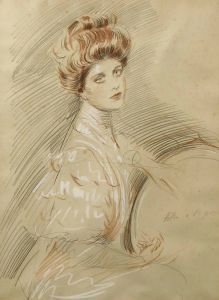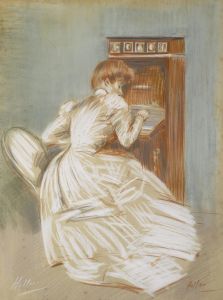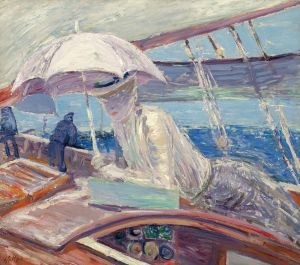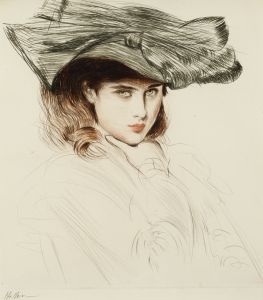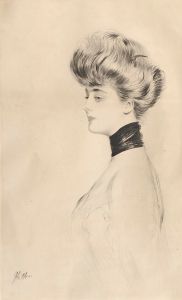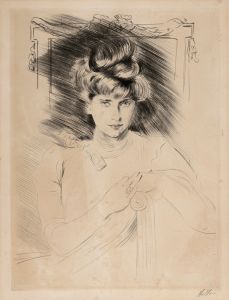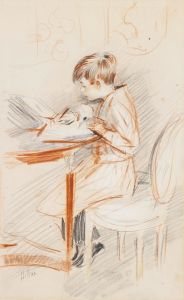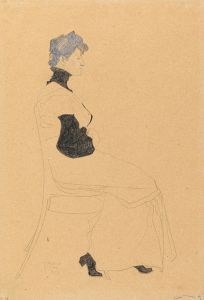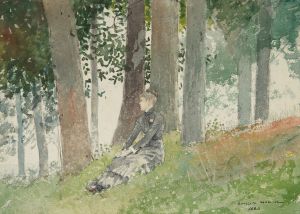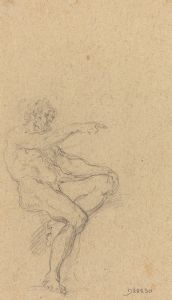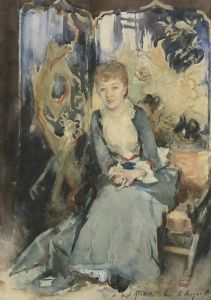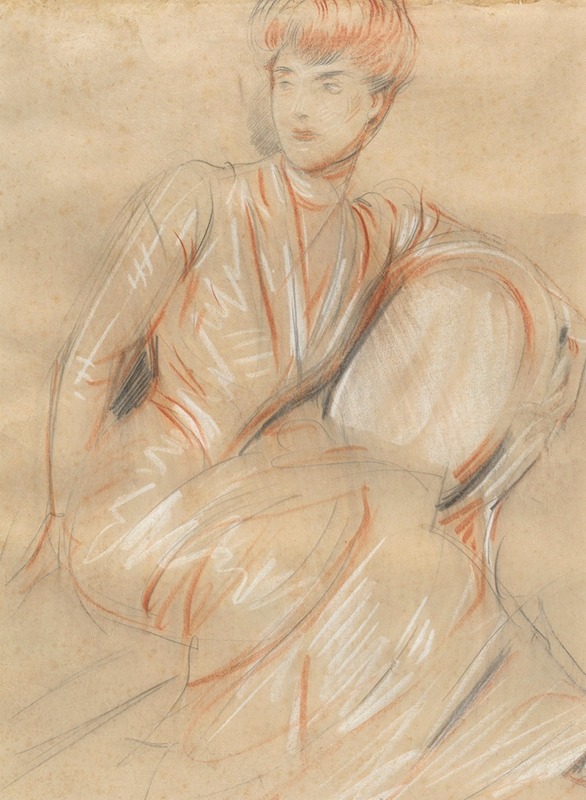
A lady seated on a chair
A hand-painted replica of Paul César Helleu’s masterpiece A lady seated on a chair, meticulously crafted by professional artists to capture the true essence of the original. Each piece is created with museum-quality canvas and rare mineral pigments, carefully painted by experienced artists with delicate brushstrokes and rich, layered colors to perfectly recreate the texture of the original artwork. Unlike machine-printed reproductions, this hand-painted version brings the painting to life, infused with the artist’s emotions and skill in every stroke. Whether for personal collection or home decoration, it instantly elevates the artistic atmosphere of any space.
Paul César Helleu was a French artist known for his portraits of beautiful society women, often capturing them in moments of leisure and elegance. One of his works, "A Lady Seated on a Chair," exemplifies his skill in portraying the grace and poise of his subjects. Helleu's work is characterized by its delicate lines and the subtle use of color, often employing pastels to achieve a soft, luminous effect.
"A Lady Seated on a Chair" is a testament to Helleu's ability to capture the essence of the Belle Époque era, a period marked by cultural refinement and artistic innovation in France. The painting features a woman elegantly seated, exuding an air of sophistication and tranquility. Helleu's attention to detail is evident in the rendering of the woman's attire and the textures of the chair, showcasing his mastery in depicting the interplay of light and shadow.
Helleu was a contemporary of other notable artists such as John Singer Sargent and James McNeill Whistler, and he shared their interest in the portrayal of high society. His works often reflect the fashion and social dynamics of the late 19th and early 20th centuries. Helleu's portraits were highly sought after by the elite of Parisian society, and he became renowned for his ability to capture the personality and elegance of his subjects with a sense of intimacy and immediacy.
The artist's technique involved the use of drypoint, a printmaking process that allowed him to create fine, precise lines. This method contributed to the distinctive style of his portraits, which often featured a combination of drawing and painting techniques. Helleu's use of pastels added a softness and vibrancy to his works, enhancing the delicate features and expressions of his subjects.
Helleu's influence extended beyond the realm of painting; he was also involved in the design of decorative arts, including ceramics and furniture, reflecting the broader artistic trends of the Art Nouveau movement. His work was celebrated for its elegance and refinement, qualities that are evident in "A Lady Seated on a Chair."
Throughout his career, Helleu maintained a close relationship with other artists and cultural figures of his time. He was friends with Marcel Proust, who admired his work and even mentioned him in his famous novel "In Search of Lost Time." This connection to the literary and artistic circles of the Belle Époque further cemented Helleu's status as a prominent figure in the art world.
Today, Helleu's works are held in high regard and can be found in various museums and private collections around the world. "A Lady Seated on a Chair" remains a fine example of his artistic legacy, capturing the elegance and sophistication of an era that continues to fascinate art enthusiasts and historians alike. Through his portraits, Helleu offers a glimpse into the world of the Belle Époque, preserving the beauty and charm of a bygone era for future generations to appreciate.







